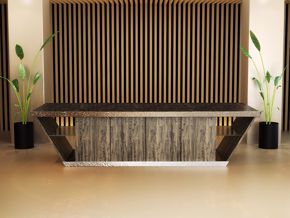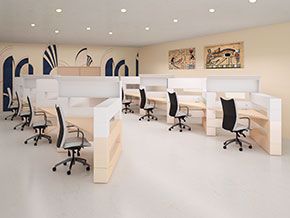I’m sure we’d all agree that creativity is vital to any company’s DNA. This trait is crucial to companies in all rapidly changing industries, and currently, I’d assert that includes most of us.
It’s almost scary how fast our way of life is changing by virtue of product and system development.
Companies everywhere want their workers to be creative. Gallup polls indicate only 30 percent of workers say they are expected to think of new ways of doing things. However, the majority believes the opposite is true.
Regardless of the job (even if creativity seems irrelevant), creativity can be employed in some fashion: process, tool change, customer relationship, design change, or even timing. Because they are closer to the tasks being performed than anyone else, the workers involved have a much clearer viewpoint.
Despite the proximity of workers to performance, it seems as though few companies are taking the necessary steps to include creativity in their way of doing things. Even when they say are expected to be creative at work, only 15 percent of employees truly believe they are actually being given the leeway to take risks.
Companies can advocate for creativity by reexamining the way they address their workplace environment. They can make creative thinking part of the job description, allow employees the freedom to take risks, and create space in the schedule for creative planning.
Projecting a Creative Workplace Environment
It’s difficult to sell a need for a creative-minded organization when your workplace itself is dated, and does not reflect the direction you say you’re going. A creative mindset needs to be more than just a word in the corporate manual. It needs be at the forefront of what the public sees firsthand.
Making Creative Expectations Part of the Job Description
If creativity is important, it needs be part of your plan, conversation, and day-to-day measurements. It has been proven that employees, when given clearly-defined expectations for thinking differently, are three times more likely to believe they can take the necessary steps to create new products or solutions.
Conservatism Is the Enemy of Innovation
A company unwilling to take calculated risks will stop employees at the pass from coming to the table with new ideas. Even though the process can be risky, companies need to provide workers with the autonomy to think and act creatively.
Practical Applications in a Creative Organization
To be creative, a company must look and act that way as it measures creative performance. The workplace must be a prime example of the creative modern work environment. Management must support and challenge workers to come up with new ideas. When ideas are forthcoming, managers need to praise staff, and evaluate how those ideas can be put into practice.
At 90 Degree Office Concepts, one of our builders came up with a plan for reorganizing our shop production process. Even though the plan didn’t incorporate a complete set of requirements for upgrade, our team, working together, implemented a highly effective incremental plan to make our shop more productive.
Get Clarity on Outcome Rather Than Steps
The idea of creativity is to implement limitless thinking and workable ideas for the steps that must be taken to execute.
For our shop plan idea, the idea for how to best organize our shop for greater efficiency and productivity came first. After we got clear on the outcome, we were able to put together the steps for how and when to do what. Micro-managing the ideas with steps would have circumvented and disrupted the main plan.
By allowing our workers to understand they are allowed to be creative within certain boundaries, we have found a recipe for new thought and maintaining balance.
Getting Employees Involved in Creative Thinking
Asking questions, seeking opinions, and getting workers involved in the process is a surefire way to raise their input level. People like to have their opinions sought after. Statistics have shown that workers are up to 20 percent more likely to come up with ideas to share when they feel involved in the outcome.
At 90 Degree Office Concepts, we feel creativity in the workplace is what keeps companies moving forward. It’s difficult to rely on one department to provide all the inspiration and innovation for the entire organization. Creativity must be the lifeblood of a company in order for it to stay relevant.









